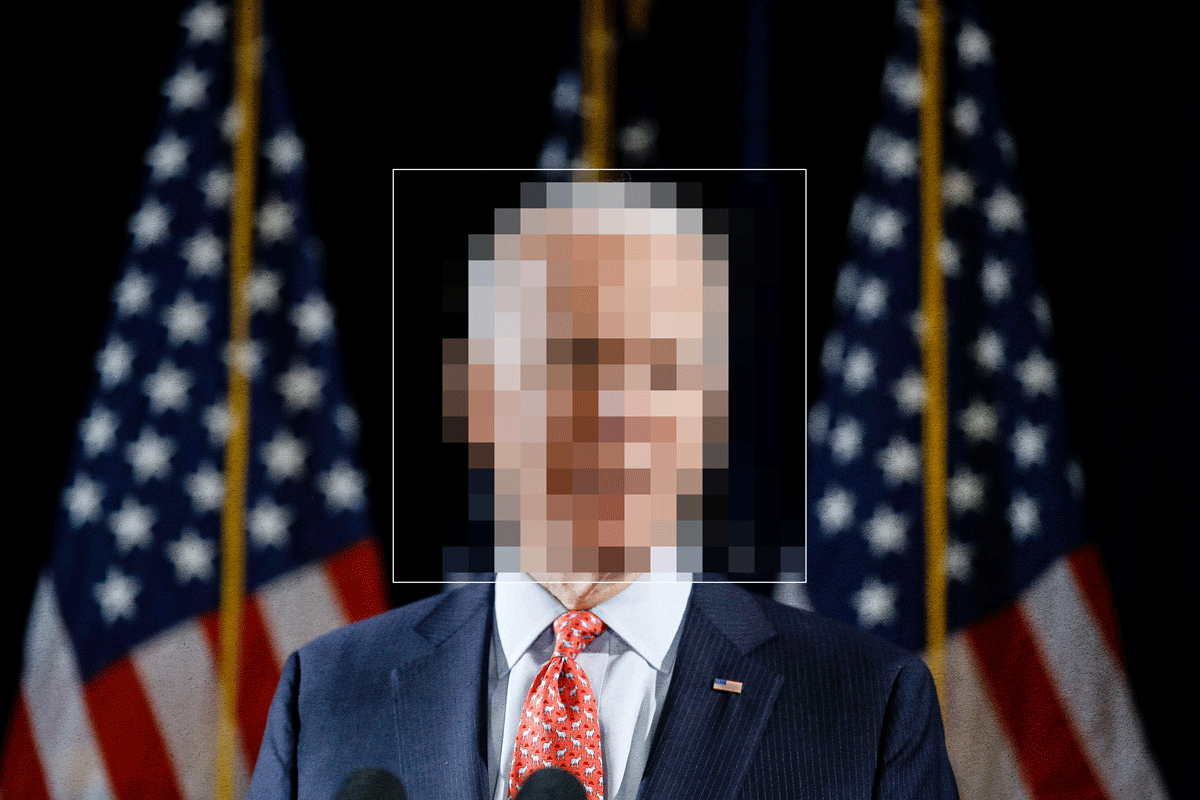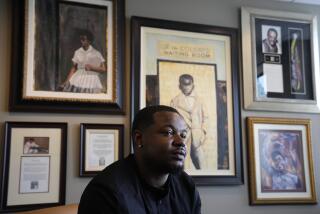Reliance on Fingerprints Coming Out All Thumbs
- Share via
EVERETT, Wash. — “I’ve done nothing wrong,” Pushp Grover insists, but the government wants more than her word. It wants her fingerprints, and those, try as she might, she cannot give.
A native of India who has lived in America since 1970, Grover decided last year to apply for U.S. citizenship. That meant her fingerprints had to be checked against the FBI’s criminal records.
But such a requirement is no simple matter for Grovernor, as it turns out, for millions of other people.
Every year, new categories of Americans, from teachers to bank customers to driver’s license applicants, are being told to lay down their digits to prove who they are. The trouble is, not everyone can, and as we become a fingerprinted nation, Grover’s odd predicament may become all too commonplace.
Eleven times since May 1996, her smooth, fine-skinned fingers have been inked and rolled onto cards. Eleven times, black smudges have appeared where patterns of arches, loops and whorls ought to be.
The government’s form letters soon became as predictable as they were maddening: Your prints are unreadable; please submit another set.
Grover, a quiet, gracious woman whose entire criminal record consists of a $10 speeding ticket in 1979, says the whole frustrating affair has made her feel like a suspect character.
“I’m not a criminal, by any means,” she says. “At work, people are so surprised. They say, ‘You are a model citizen. Why are you having a problem like this?’ ”
Why, indeed? Advocates say the spread of fingerprinting will create a safer, more secure world through robust identification. Civil libertarians see a dangerous slide toward a police state.
Both sides, however, may be giving the craft of collecting and matching fingerprints too much credit. A closer look reveals it’s not the foolproof, universal means of identification that many assume it to be. As the uses of fingerprinting multiply, so do opportunities for unbending institutions, armed with imperfect technologies, to get befuddled by fingers that don’t fit the mold.
In short, don’t sweat Big Brother, at least not yet. Beware instead the harried clerk at the license bureau (or bank or department store) who someday soon may take your thumbprint and declare, “Sorry, the computer says you aren’t really you.”
Already, fingerprint fumbles range from high-tech to low:
* Last year in Florida, a pilot program to collect electronic thumbprints from driver’s license applicants lasted just three months. When Gov. Lawton Chiles unveiled the system, he pressed his thumb on the scanner and nothing happened. Then motor vehicles department spokeswoman Janet Dennis tried. “No matter how hard I pressed down, it didn’t work,” she says.
* In Miami, Raul Blanco’s citizenship application was rejected five times by the Immigration and Naturalization Service. The reason? Ten fingerprints are required, and Blanco’s cards had only seven. That’s because he lost three fingers years ago in a Cuban sugar mill, but officials repeatedly missed his explanatory notes.
“More and more mistakes are being brought on by the intensified effort to make sure that no criminal is getting by,” says Joseph Reina, an immigration attorney in Dallas.
Police have been matching suspects’ prints to those left behind at crime scenes for 100 years. But only in the last two decades has the computer power existed to routinely check a set of prints against the millions of criminal prints on file with the FBI.
That capability has been seized upon by Congress and state legislatures. About 1,000 laws now authorize fingerprint checks for an ever-widening array of people: lottery workers, day-care providers, school janitors, nursing-home workers, even tow-truck drivers.
There’s a three-month backlog in processing fingerprint checks at the FBI, where officials expect more than 14 million requests for checks this year, up from 11.2 million last year.
Fingerprinting also has emerged as a favored tool in the booming field of “biometrics,” the computerized identification of people using body parts ranging from retinas to wrist veins.
Where technicians once pored over ink-and-paper prints, now computers scan fingertips to create digitized maps of “minutiae,” the points where finger ridges end or split.
Press your fingertip on a template and it can be checked against the print you’ve already submitted to the computer. Or a “one-too-many” search can tell if your prints are already in the system under a different name--useful for weeding out check forgers or double-dipping welfare recipients.
Eleven states have started programs to scan the index fingers of people applying for welfare. Driver’s license applicants must put down their thumbs or fingers in California, Colorado, Georgia, Hawaii and Texas.
Banks in 30 states collect thumbprints from strangers who want to cash checks, and the Food Lion supermarket chain has followed suit. It’s a low-tech application, with an inked print on the check, but experts predict that with scanner prices falling rapidly, many banks and stores will start using electronically captured prints.
MasterCard is studying the use of finger images to verify cardholders’ identities, and the Federal Highway Administration is looking at electronically fingerprinting the nation’s commercial drivers.
Most of the time, for most people, such systems will perform as promised. That’s good enough for institutions hoping to save millions of dollars now lost to fraud. But system designers have yet to find the Holy Grail of 100% accuracy in matching prints or avoiding false matches--and that’s assuming they can capture the print in the first place.
Pushp Grover’s case is no one-in-a-million occurrence. It’s more like one in 10. Of all fingerprints submitted to the FBI last year, 11% weren’t clear or complete enough to be classified and checked against prints on file, the agency says.
Better training of fingerprint-takers can improve readability, FBI officials say. And electronic scanners can capture some prints that ink and paper can’t.
But even so, one in every 50 people has fingerprints that “don’t work,” estimates Jim Wayman, director of the National Biometric Test Center at San Jose State.
Manual labor or exposure to chemicals can wear down the finger ridges of bricklayers, farmers and factory workers. Women, especially of Asian descent, tend to have fine, hard-to-read fingerprints. The elderly may have cracked skin that changes their fingertips from week to week.
“Fingers can get really ugly and corroded,” Wayman says. “It’s funny--when you’re dealing with people, you get into physiological aberrations that you might not think about.”
Civil libertarians aren’t amused, saying more and more innocent people will arouse suspicion simply because their fingertips don’t mesh with the machine.
Privacy advocates, meanwhile, warn of greater perils awaiting the majority whose prints can be collected. They say there are few controls preventing computerized fingerprints and the data filed with them from being traded to build comprehensive profiles of individuals.
“I do not want to be tracked like a can of dog food,” says Cyndee Parker, a critic of the new driver’s license fingerprint program in Georgia.
Opponents there are a varied lot: gun groups, Republican legislators, the American Civil Liberties Union, and religious fundamentalists who fear the “mark of the beast” prophesied in the biblical book of Revelation.
“We don’t know what the mark is, but having fingerprints on ID cards seems too close,” Parker says. “You don’t want to get up to heaven and have God say, ‘Remember when you had your body turned into a bar code? That was it.’ ”
Boosters contend that fingerprinting is less intrusive or revealing than information already on a driver’s license: picture, height, weight, age and birth date.
“If somebody has your fingerprints, what can they do with it? It turns out, not a darn thing,” says Gordon Dechman, president of FingerPrint USA, a consulting company in Haymarket, Va. “It’s just a way to determine if you are who you say you are. If people understood how much they could save and what kind of protections they’d get, I’d think everybody would demand it.”
Pushp Grover was willing, 11 times over.
She and her husband, Kumar, pestered immigration officials for more than a year, even enlisting the aid of their congressman. Finally, on June 30, the INS adopted a new fingerprint policy. After two unsuccessful attempts, the agency will accept police clearances from every city where an applicant has lived during the last five years.
So it appears Grover can become a citizen without fingerprints--but not without lingering bitterness.
It was a big step last year for her to decide, at age 52, that she would call America home for the rest of her life. Being treated as an outcast because of a bodily “flaw” that she can’t see, never mind change, has made her question what it means to belong here.
“I wanted to give up on the whole thing at one point,” she says, her confounding fingers resting in her lap. “I am so disgusted.”


